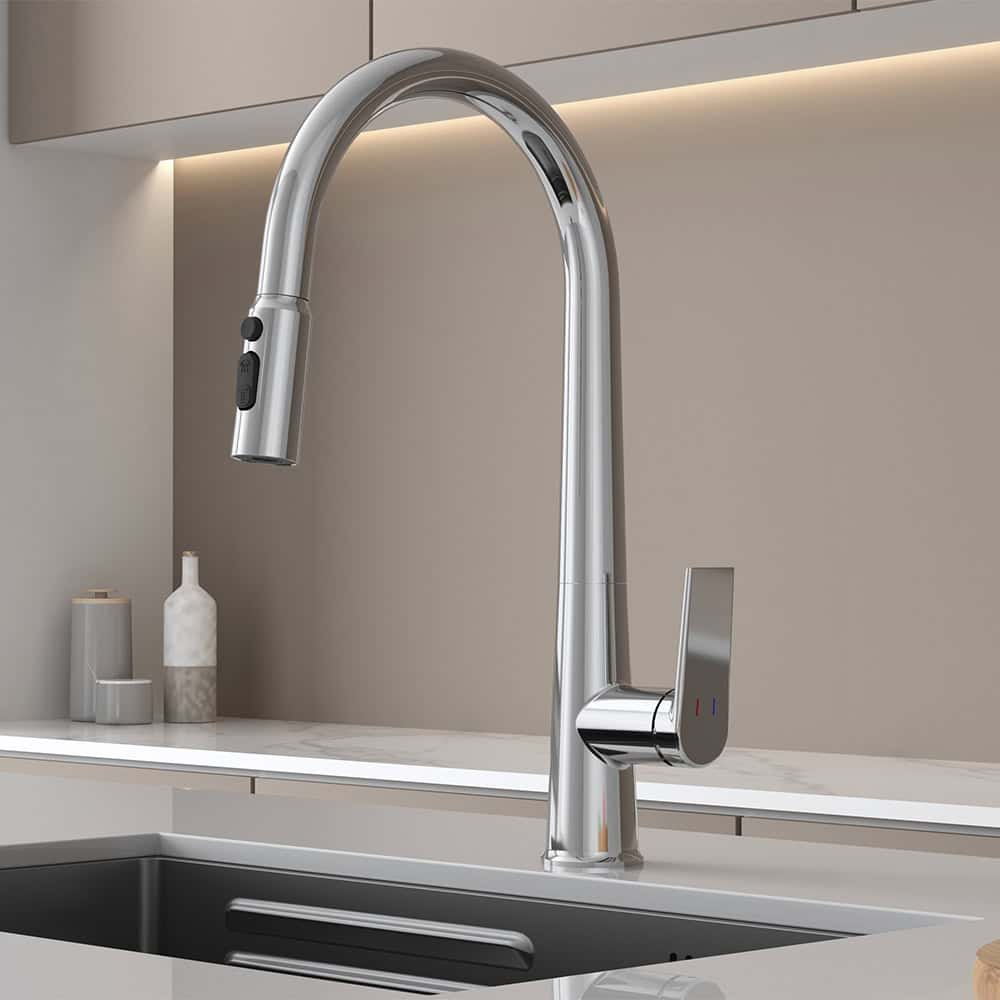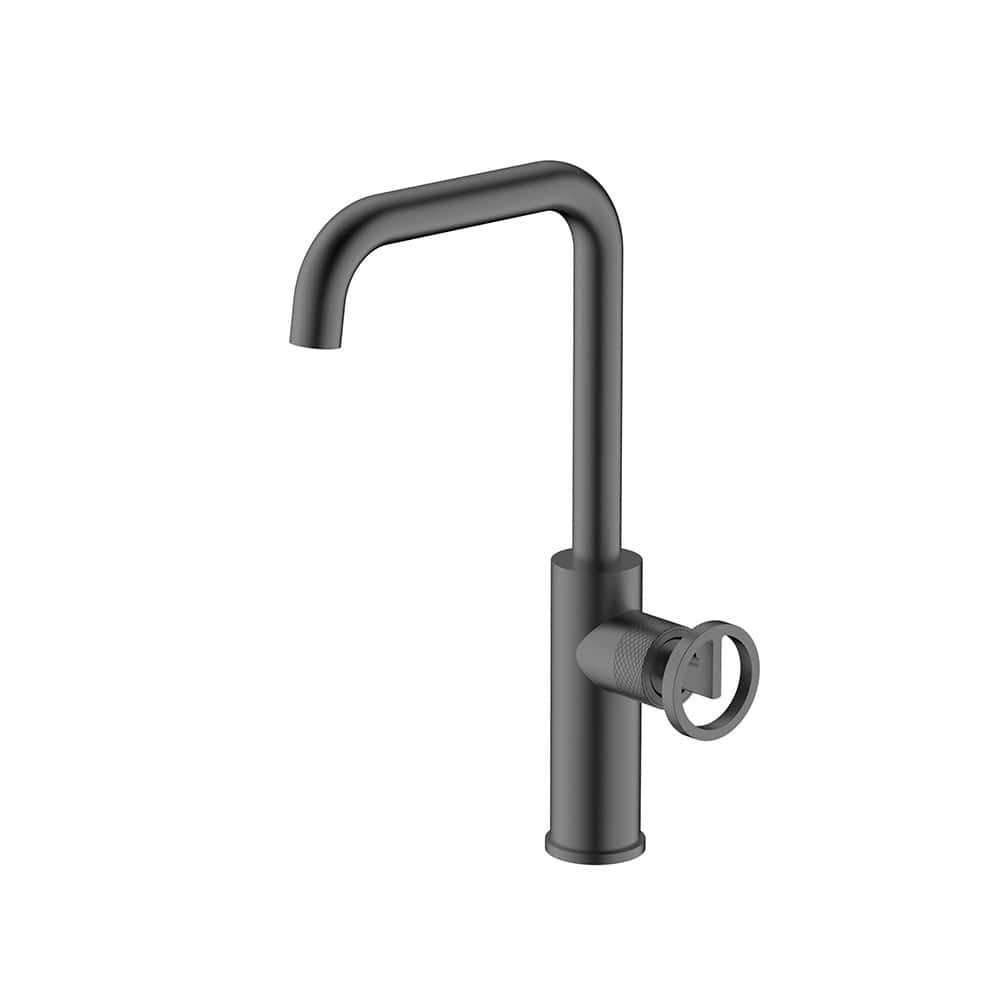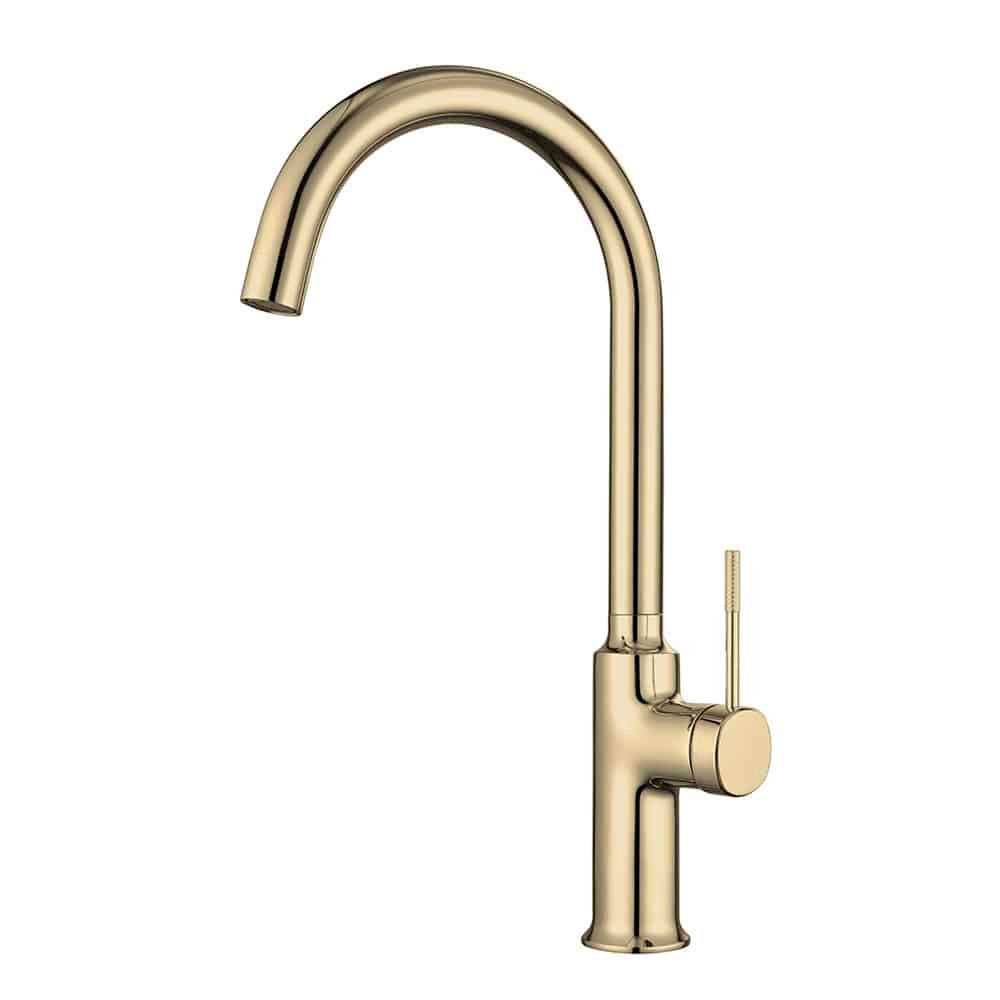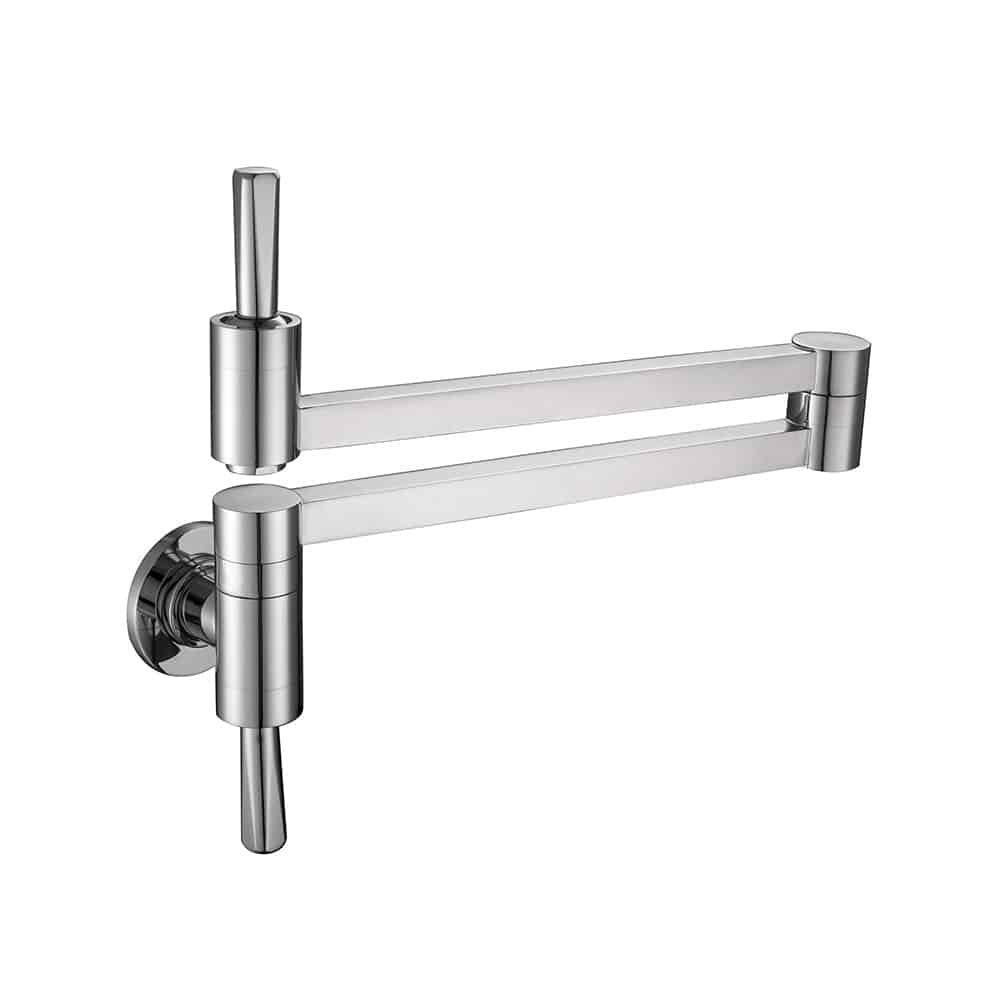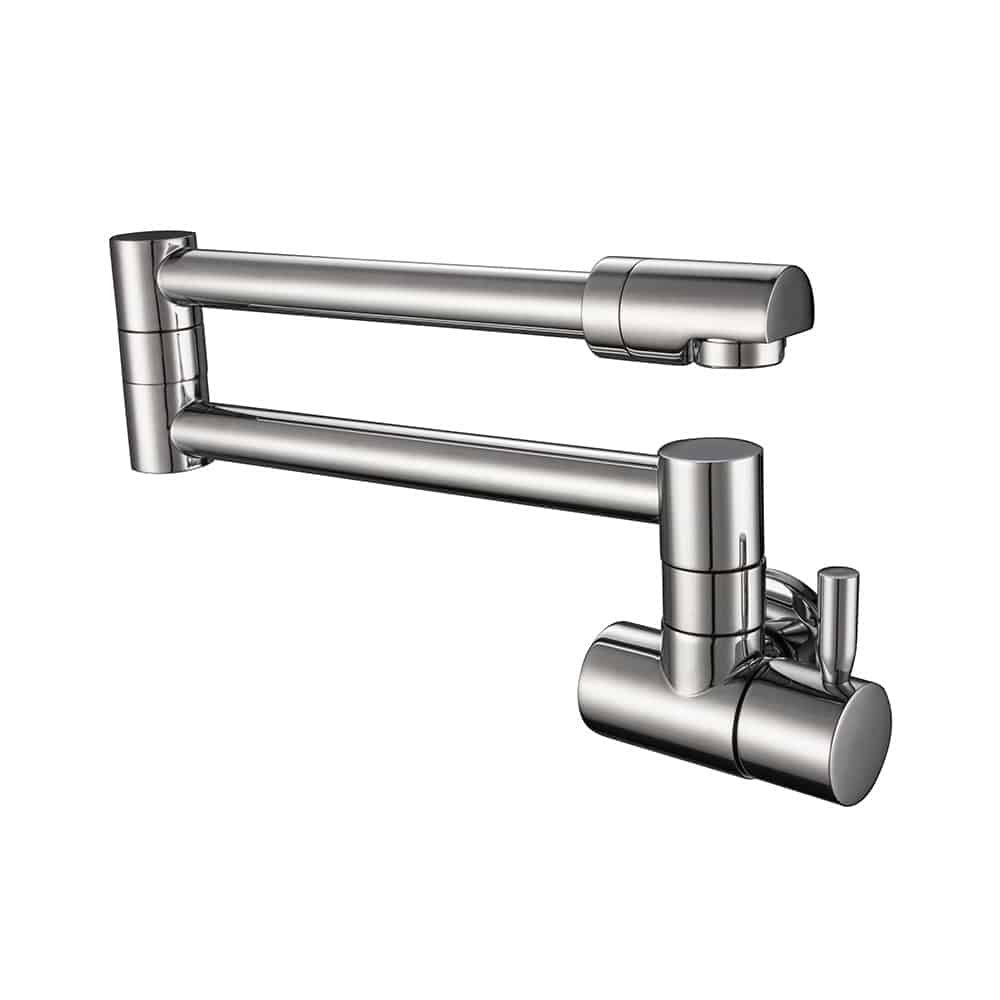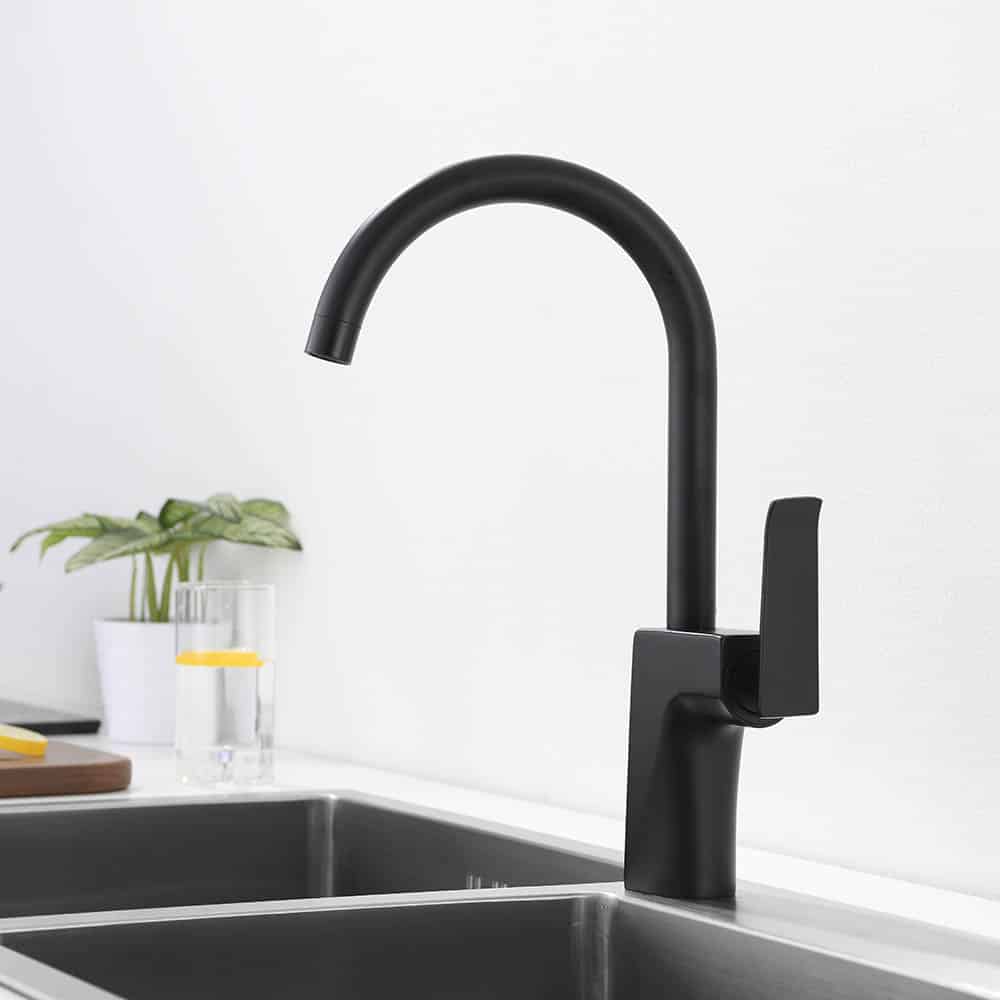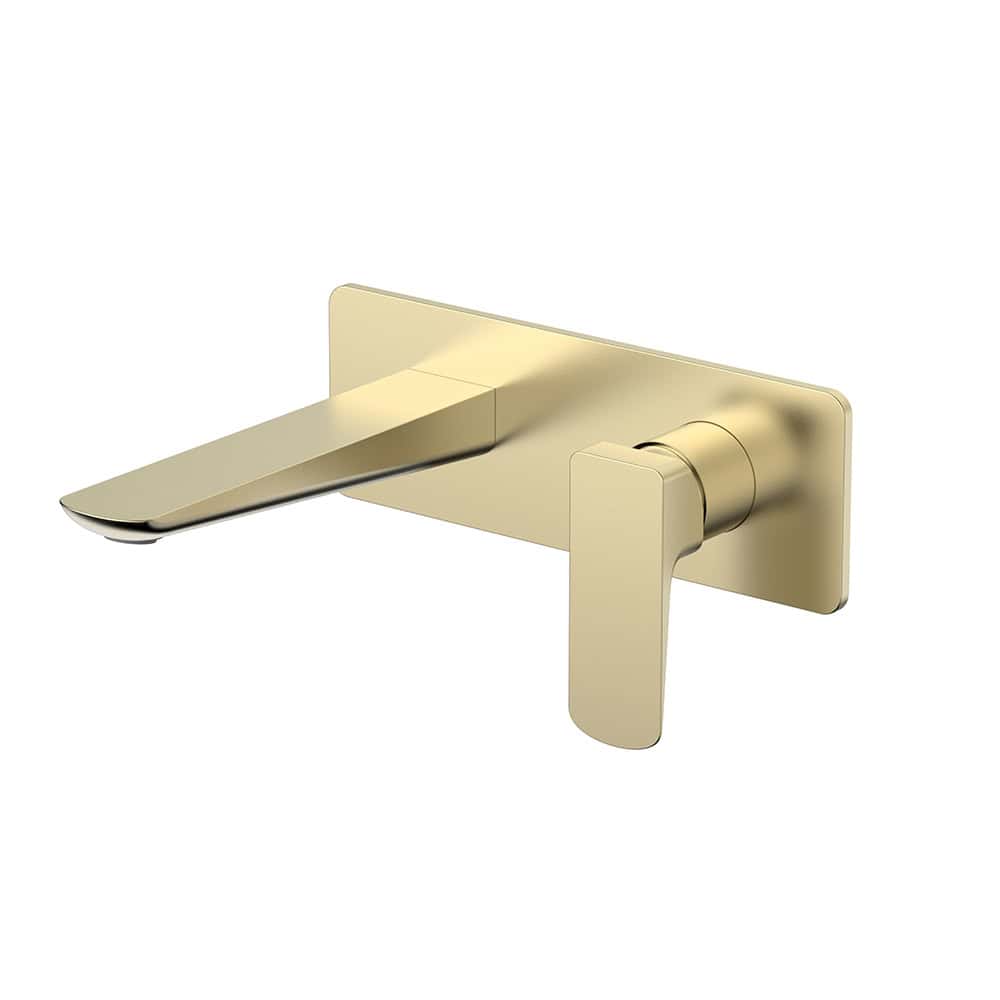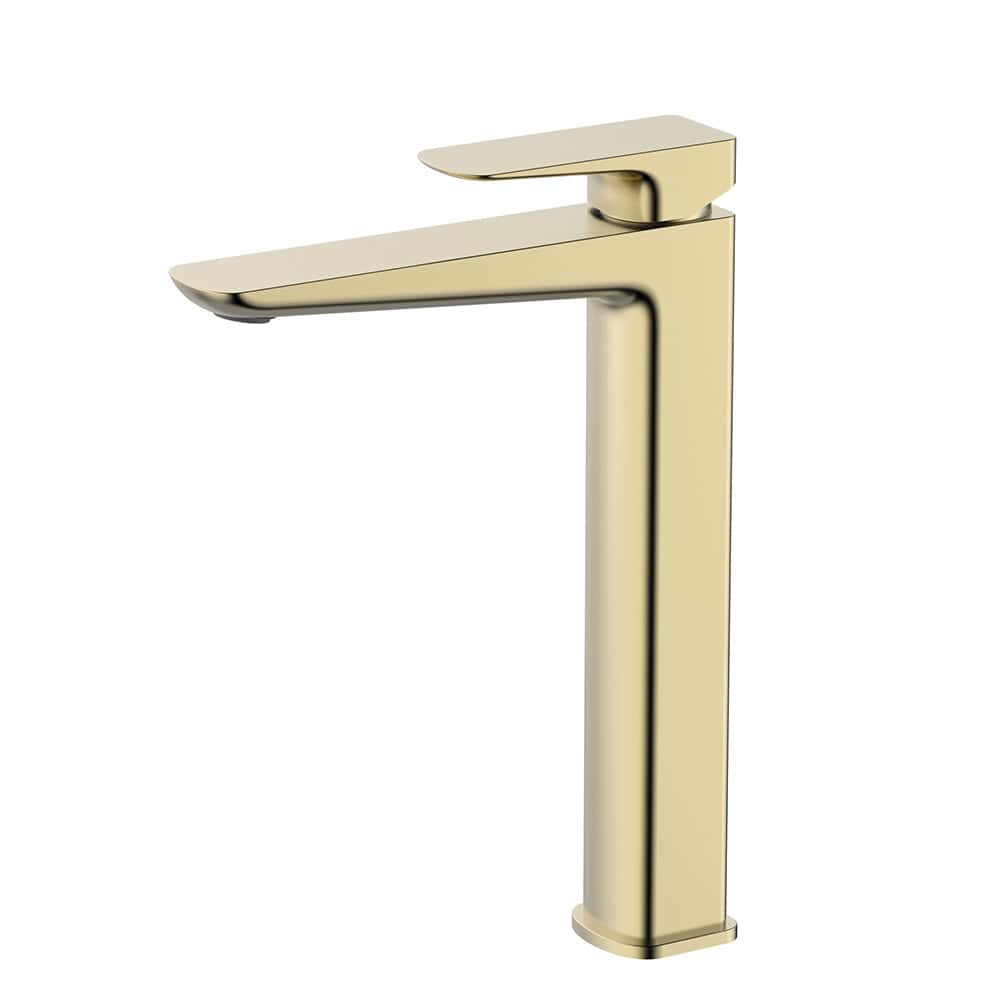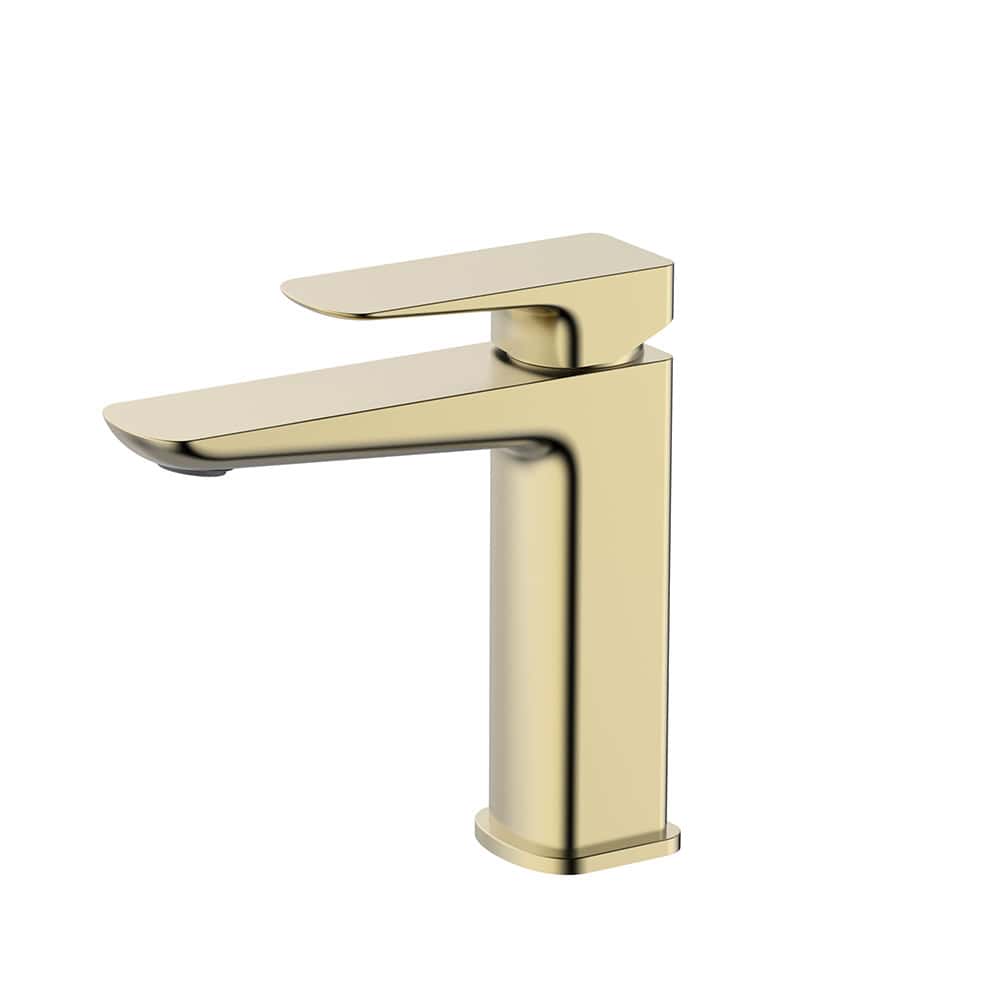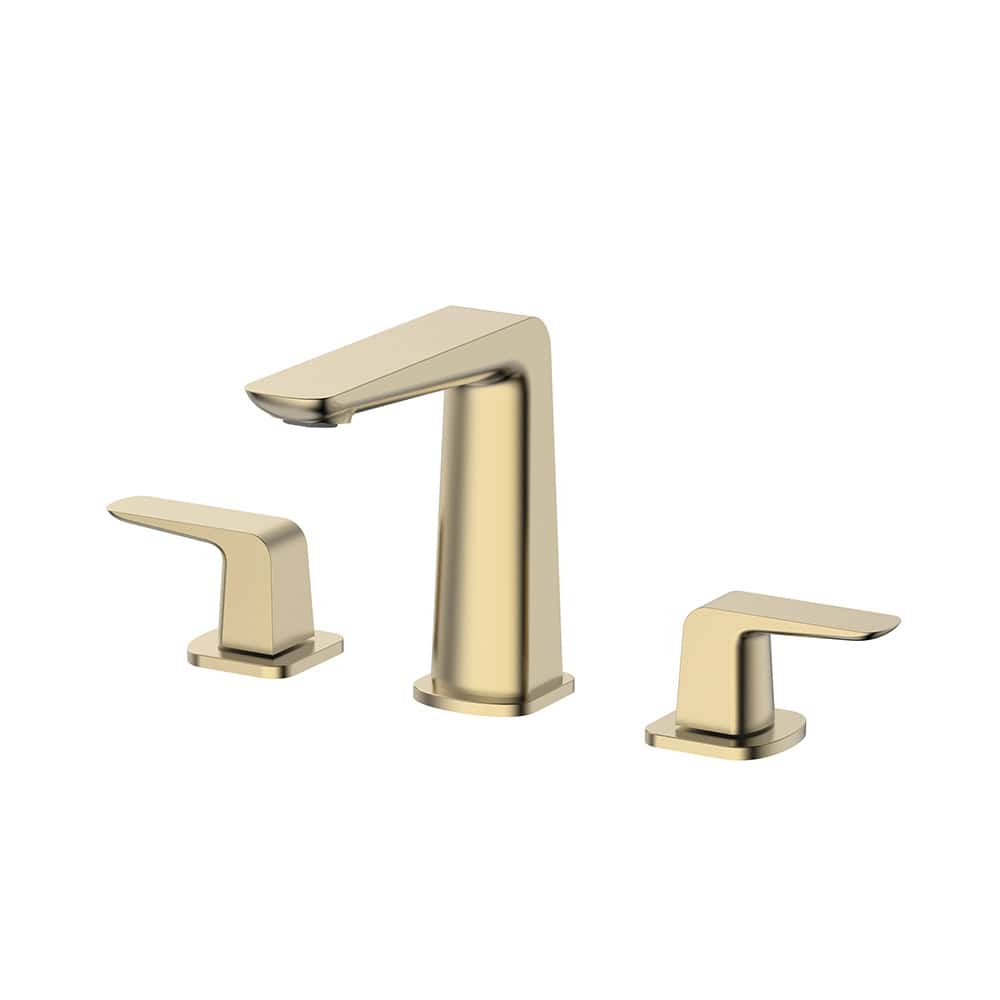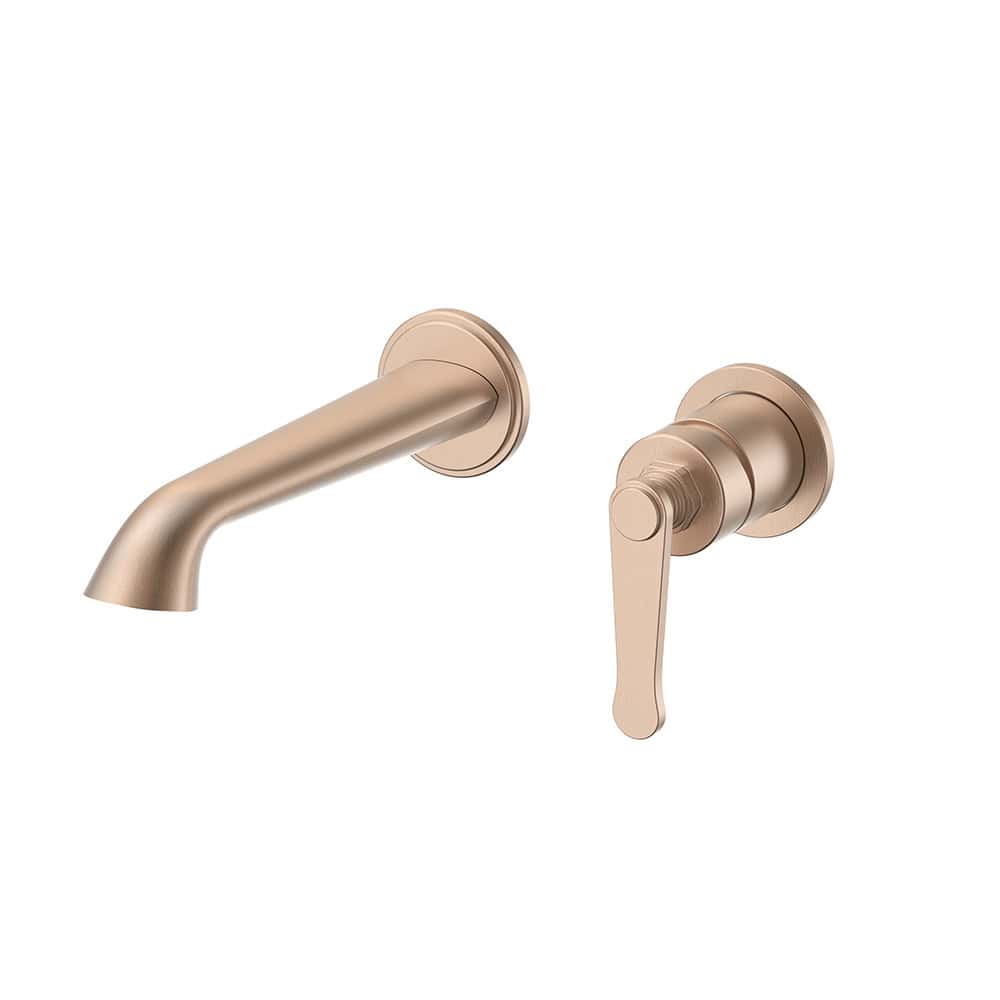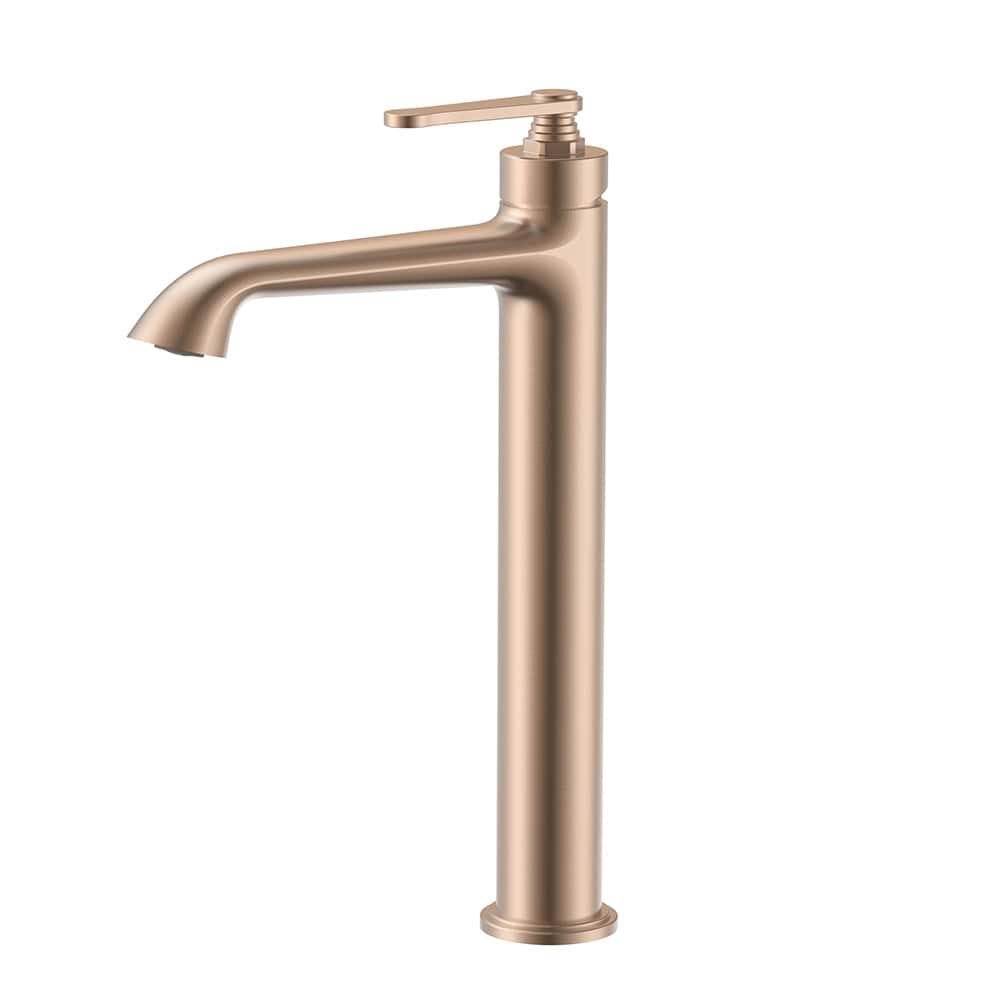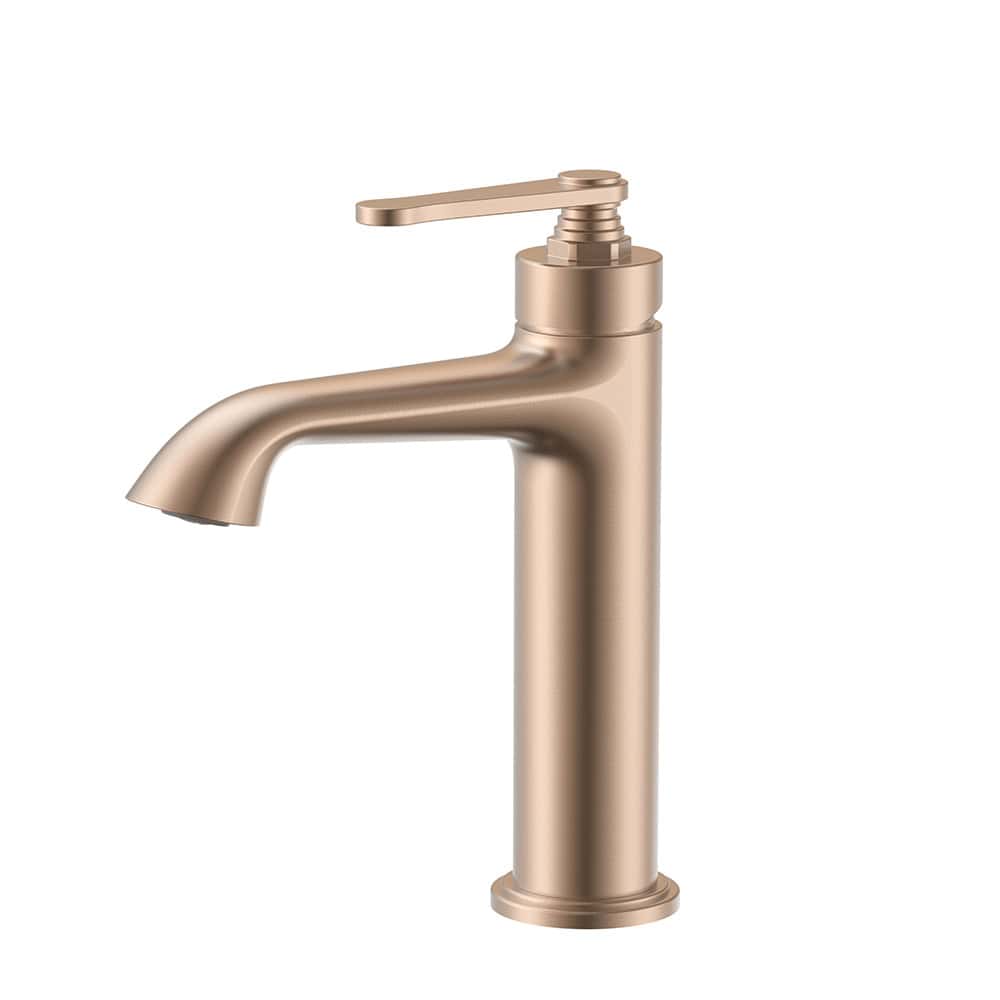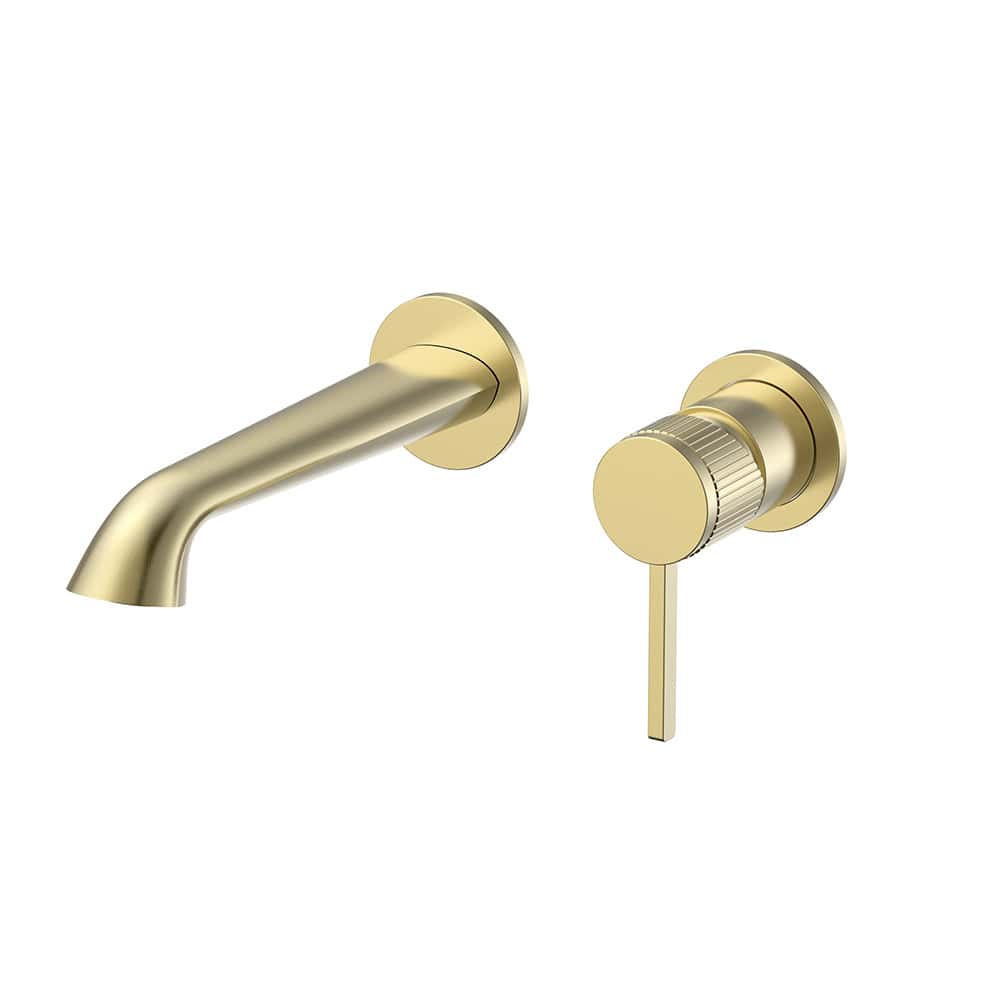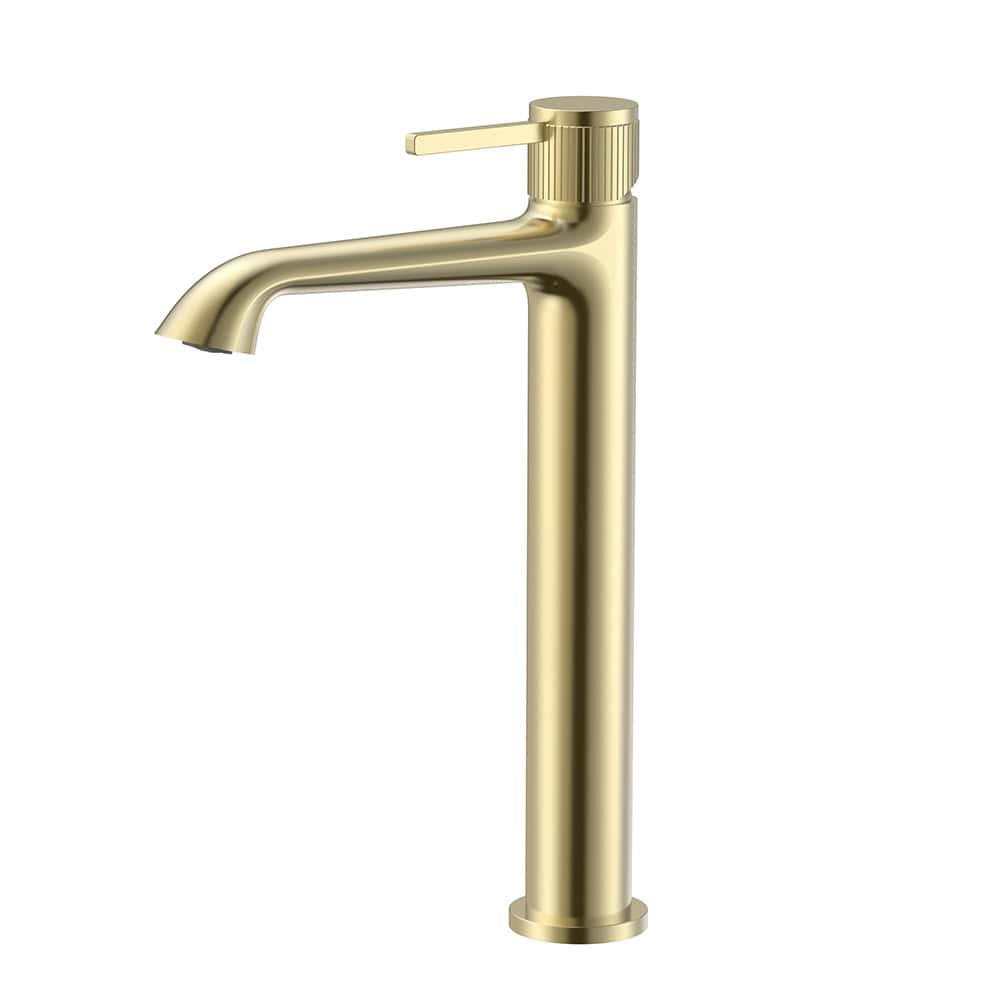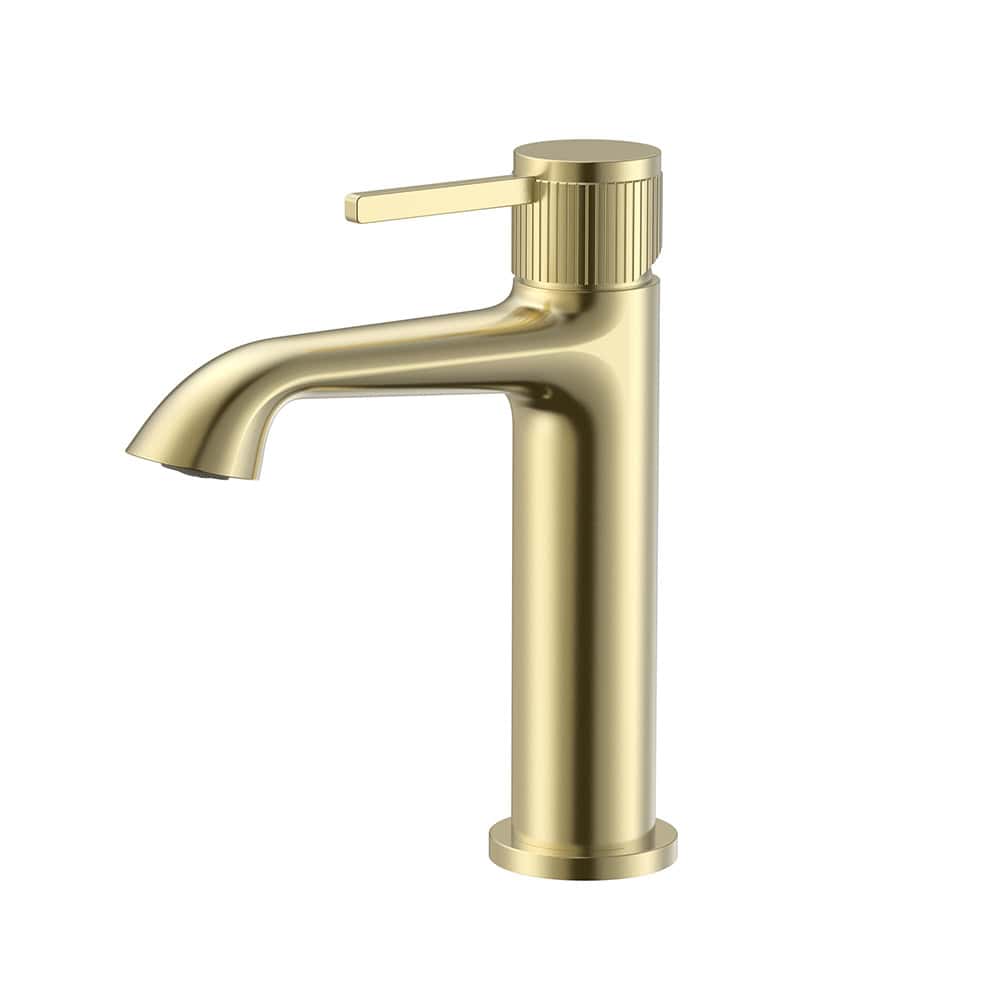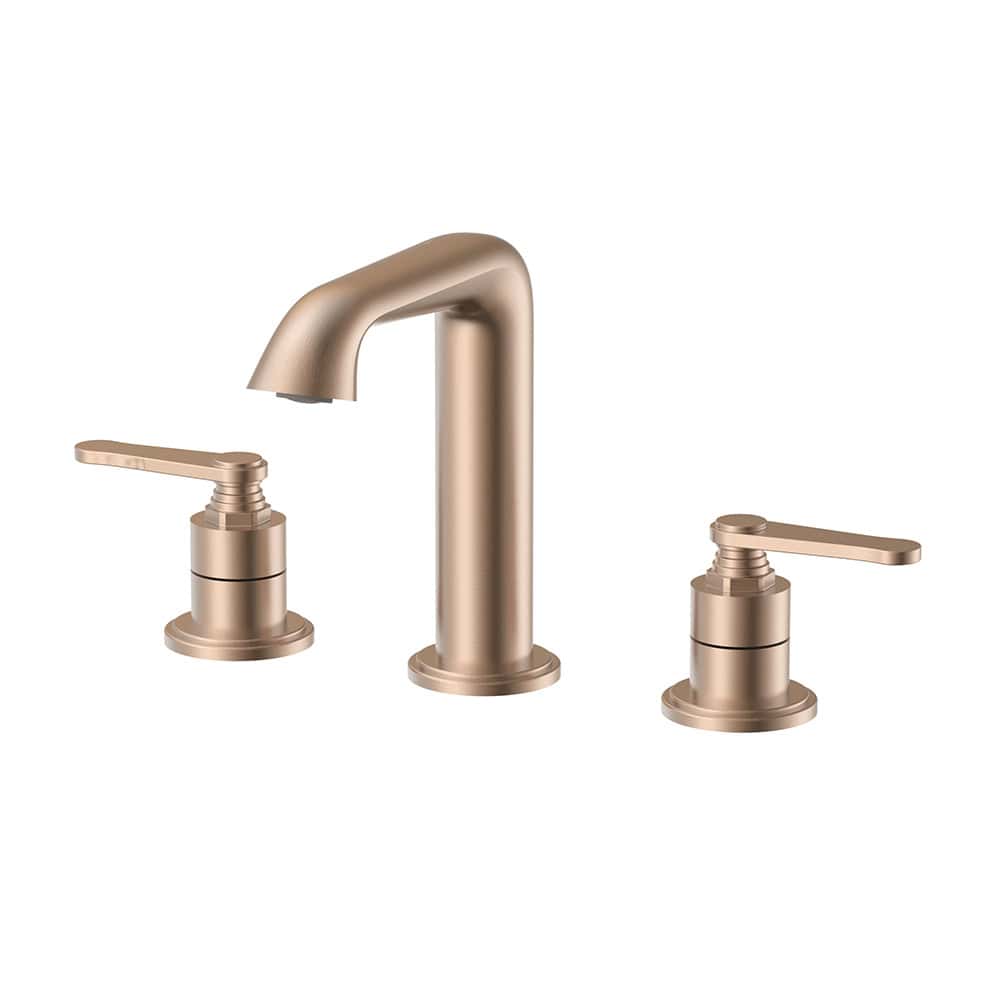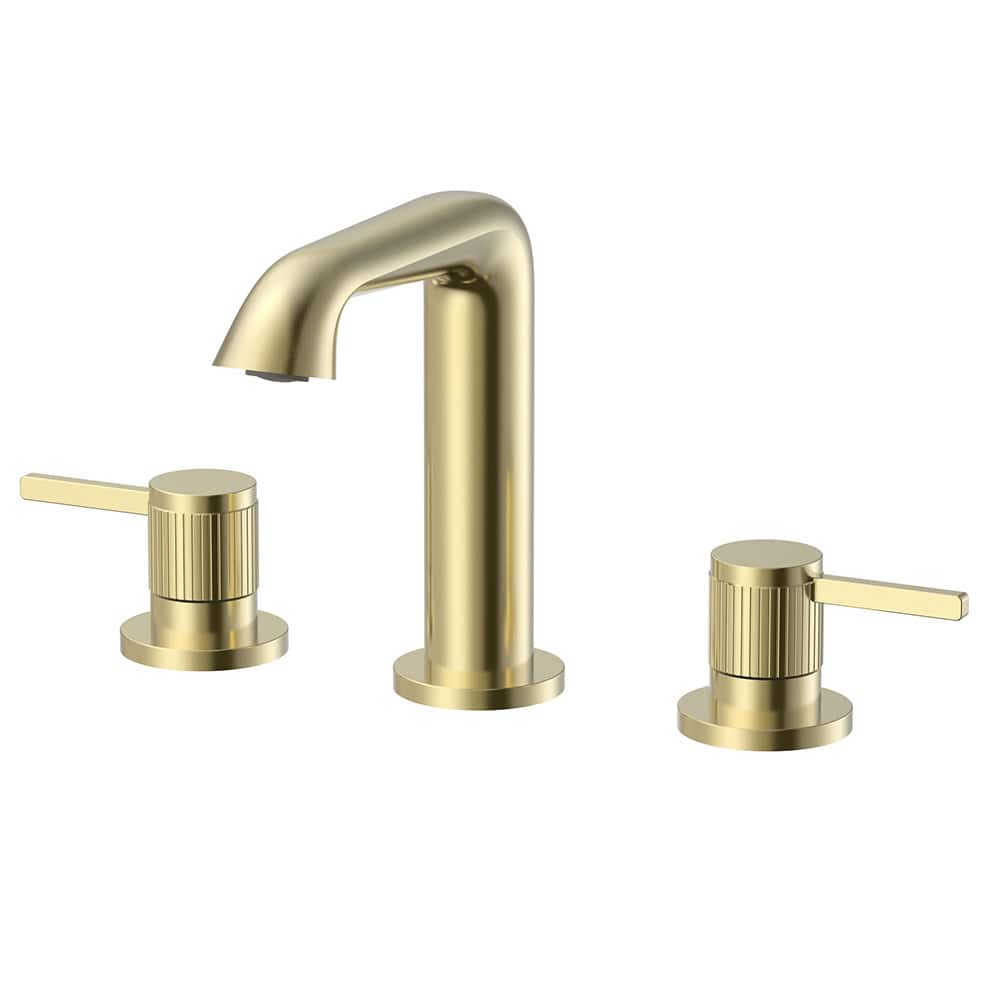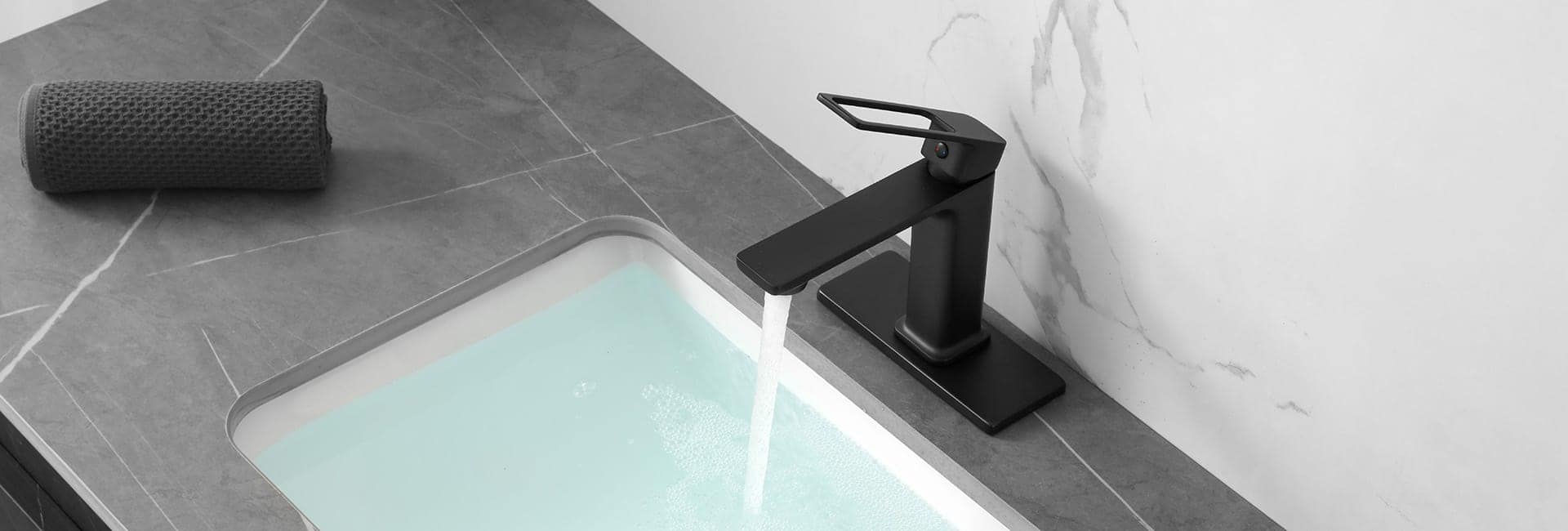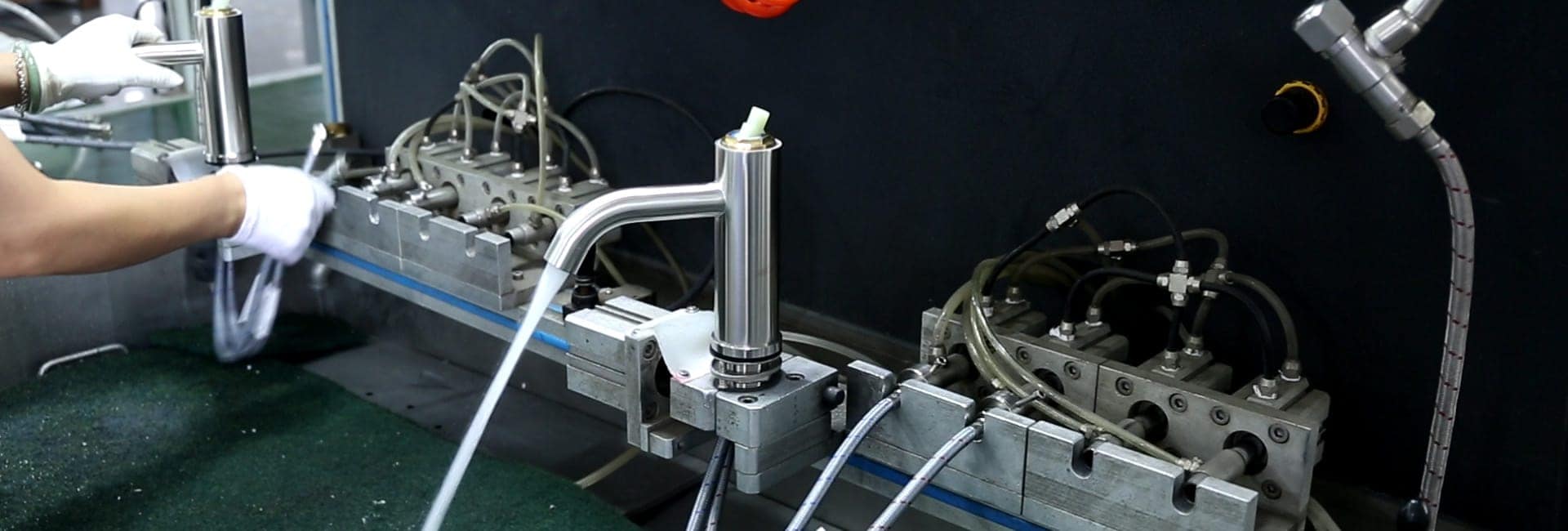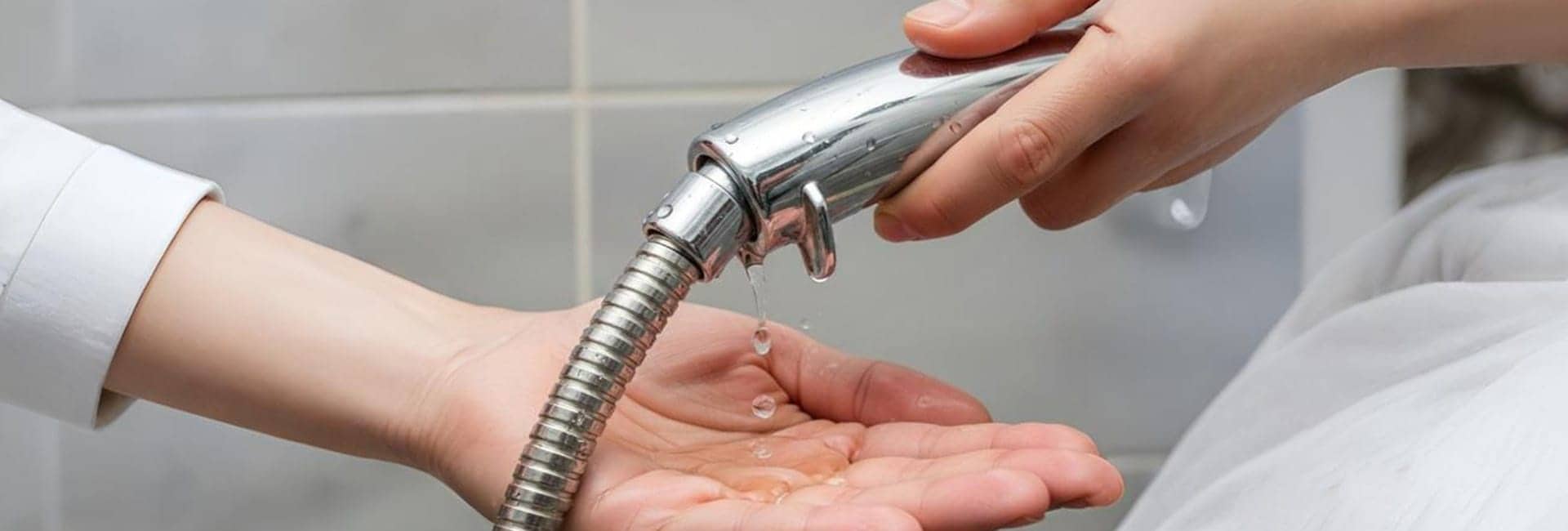Hey there! When you’re planning a renovation or just swapping out an old fixture, we often focus on the spout or the sink itself. But the faucet handle is actually the most critical touchpoint in your bathroom or kitchen.
It’s the small but mighty intersection of tactile experience, ergonomic function, and aesthetic expression. Choosing the right handle isn’t just a design decision; it profoundly affects the overall user experience, making sure your fixture is easy to operate, hygienic, and durable.
Ready to transform this decision from overwhelming to informed? Let’s break down the complex world of faucet handles together!
The Foundational Choice: Control Configurations
The most fundamental decision you’ll make is how the water is controlled. This choice sets the tone for functionality, ease of use, and installation.
The Efficiency of Single-Handle Control
Single-handle faucets feature a unified mechanism—typically a lever or joystick—that governs both water volume and temperature.
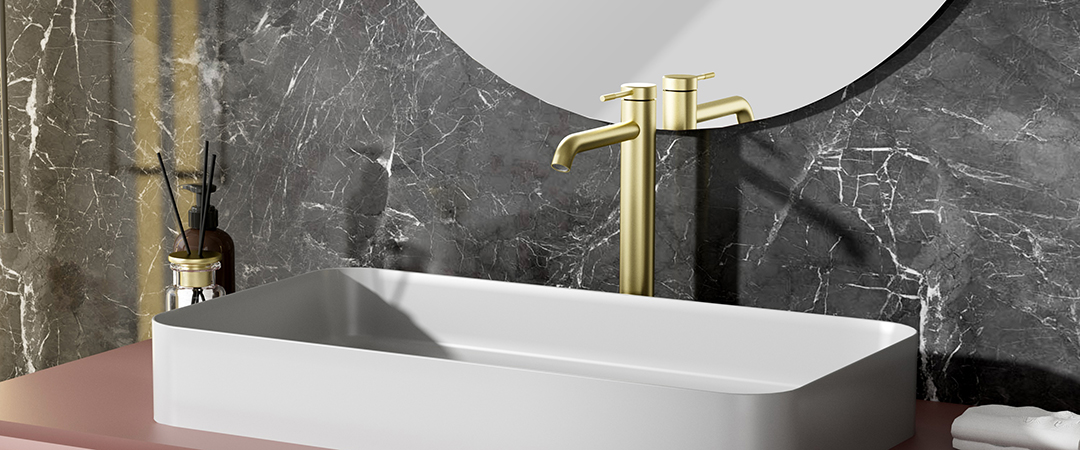
- Pros
- One-handed operation: Exceptionally practical in kitchens when your hands are full or messy.
- Sleek design: Offers a streamlined, minimalist look.
- Easy installation: Requires only a single mounting hole.
- Space-saving: Ideal for smaller sinks and compact vanity areas.
- Cons
- Less precise temperature control compared to dual-handle faucets.
- Safety risk: An accidental bump may shift the temperature to dangerously hot.
- Maintenance issue: If the internal cartridge leaks, the entire water supply to the fixture must be shut off during repair.
The Precision of Double-Handle Control
Double-handle faucets feature separate controls for hot and cold water.
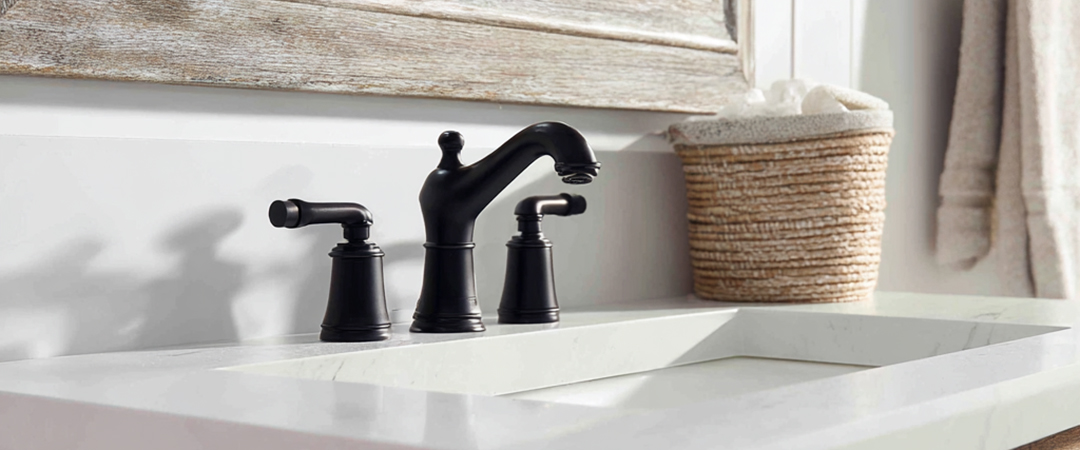
- Pros
- Precise temperature control: Allows for highly accurate adjustments.
- Classic aesthetics: Strongly associated with traditional and vintage styles, adding timeless charm and pleasing symmetry to the space.
- Ideal for larger bathrooms: Works well as a prominent design feature in master bathrooms.
- Maintenance Advantage: If one handle leaks, you can shut off only the corresponding water line for repair while keeping the other handle fully operational, maintaining water access.
- Cons
- Requires two-handed operation to adjust temperature.
- More complex installation: Typically needs three separate holes.
- Takes up more countertop space, making it less suitable for compact sinks.
The Hygiene and Convenience of Hands-Free Technology
Driven by innovation, this third category prioritizes non-contact operation.
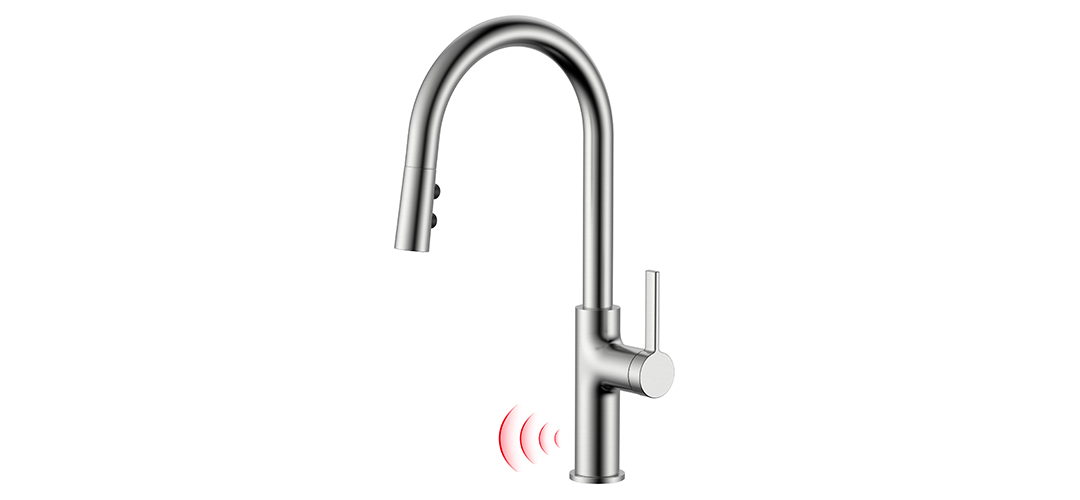
- Motion-Activated Faucets (Touchless): These use infrared sensors to detect your hands, eliminating physical contact.
- Touch-Activated Faucets: These require a simple tap on the spout or handle to start or stop the water flow.
- Primary Benefits: Both options significantly improve hygiene by minimizing the spread of germs, and they aid in water conservation. They are often found in luxury bathrooms and public restrooms. Keep in mind, these are generally the highest-cost option and require a power source.
Style Catalogue: Matching Handle Archetype to Aesthetic
The handle style is a powerful design element, communicating your room’s design philosophy—from modern minimalist to ornate traditional.
Lever Handles: The Modern Standard
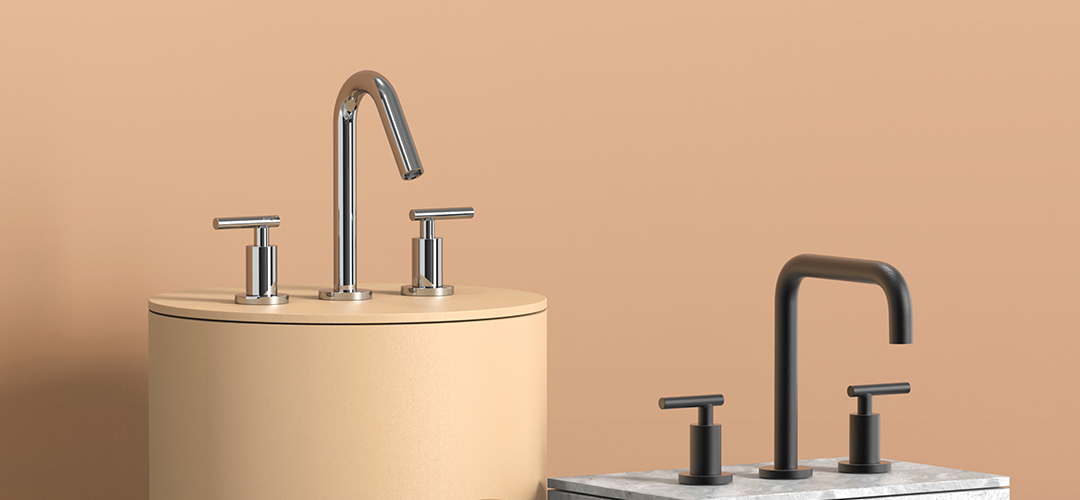
- Design: Characterized by an elongated, easy-to-grip shape that controls water with a simple tilt, push, or pull motion.
- Versatility: The most common and adaptable handle type, widely used in contemporary designs.
- Aesthetic appeal: Known for sleek, clean lines that complement modern interiors.
- Ergonomic advantage: Requires minimal effort to operate, making it comfortable for users of all ages and abilities.
- Accessibility: Excellent choice for meeting ADA (Americans with Disabilities Act) accessibility standards.
Cross Handles: The Essence of Vintage Elegance
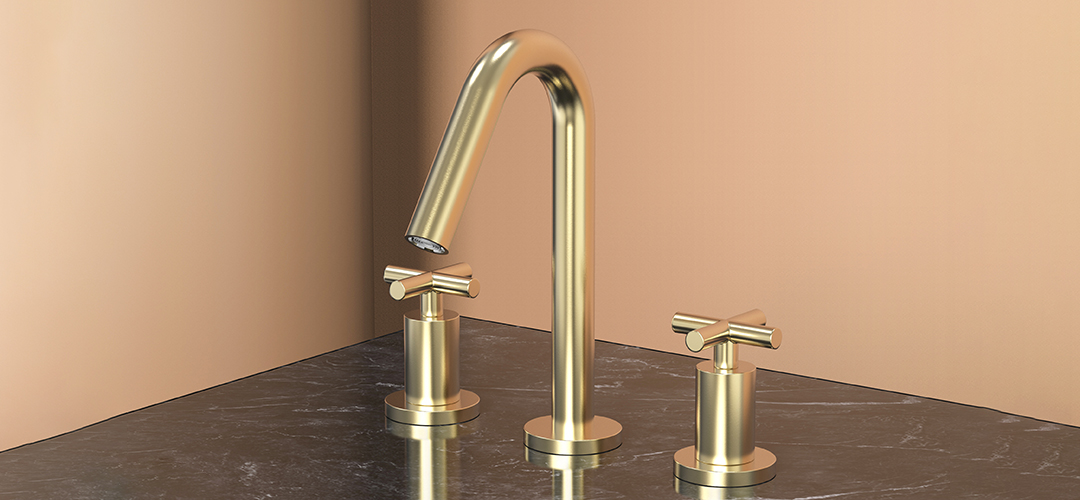
- Design: Distinguished by an “X”-shaped form with two perpendicular arms.
- Operation: Uses a twisting motion, typically a quarter-turn (90°) to open or close the valve.
- Aesthetic style: Ideal for traditional, vintage, or farmhouse-inspired interiors.
- Material options: Commonly made from metal or porcelain to emphasize their classic, heritage look.
- Grip advantage: The cross shape offers a secure grip, even with wet hands.
- Ergonomics: Requires more effort to operate and is less ergonomic than lever handles, making it non-compliant with ADA standards.
Knob Handles: Classic Simplicity
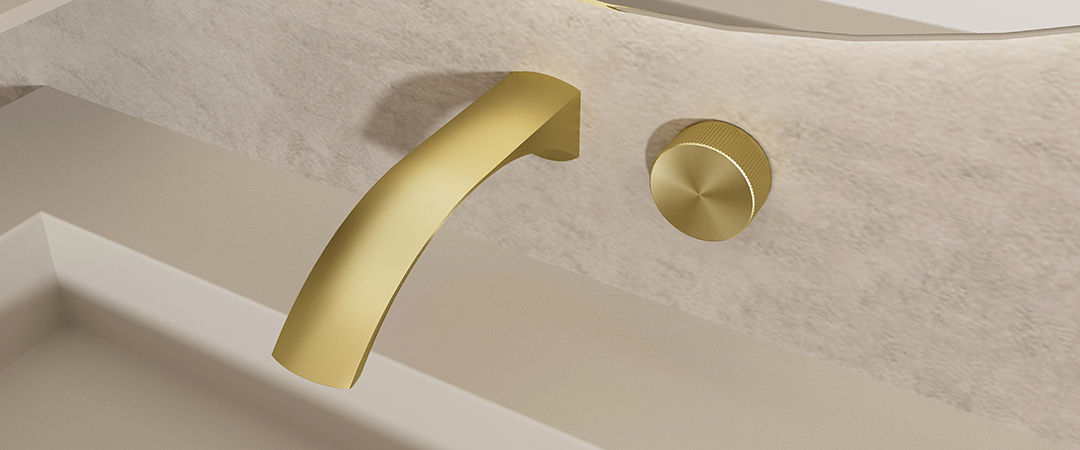
- Design: Feature a simple spherical or cylindrical shape for a classic, familiar appearance.
- Operation: Function through a twisting motion, typical of traditional faucet styles.
- Common use: Often found in traditional or budget-friendly faucet designs.
- Material options: Commonly made from metal, clear acrylic, or porcelain.
- Functionality: Provide straightforward, no-frills operation.
- Accessibility: Can be difficult to use for individuals with limited hand strength or dexterity, making them less accessible compared to lever handles.
Blade Handles: The Minimalist Statement
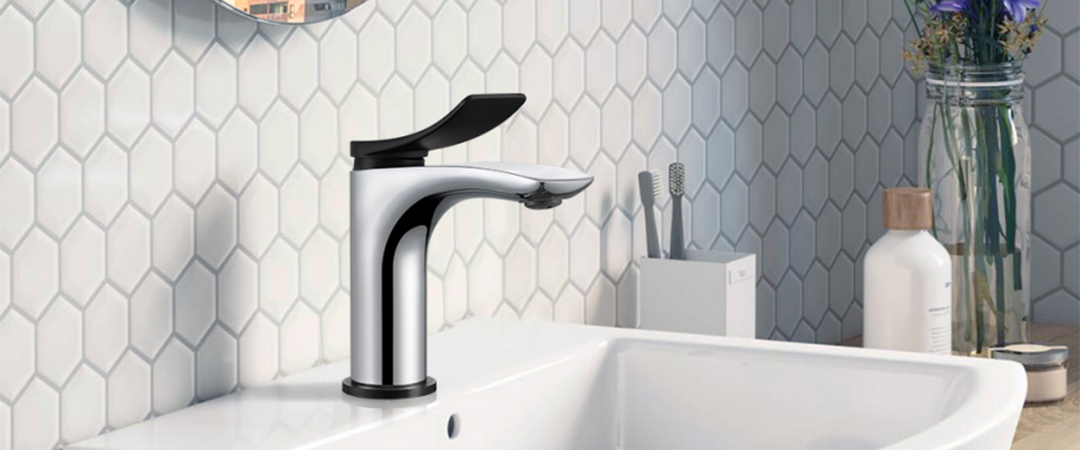
- Design: Defined by a flat, streamlined, blade-like profile, offering a modern minimalist look.
- Operation: Works through a smooth horizontal or push-pull motion.
- Aesthetic appeal: Known for their sleek, elegant appearance, perfect for modern bathrooms with clean, uncluttered lines.
- Space efficiency: The shorter handle length makes them ideal for smaller sinks, where a longer lever could feel obtrusive.
- Accessibility: Provide effortless operation, making them an ADA-compliant and user-friendly choice.
Wheel and Industrial Handles: The Utilitarian Aesthetic
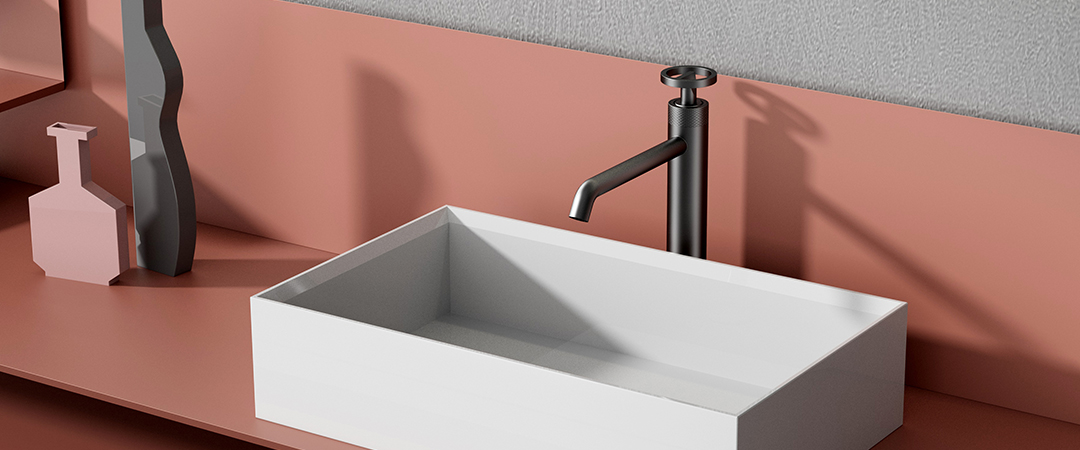
- Design: Feature a circular, wheel-like shape, reminiscent of industrial valves or a ship’s helm.
- Operation: Function by turning the wheel to control water flow.
- Aesthetic style: Commonly associated with industrial, steampunk, and retro design themes.
- Visual impact: Offer a rugged, utilitarian look and distinct tactile feedback during use.
- Grip advantage: The spoked design ensures a firm, secure grip.
- Accessibility: The twisting motion may be less accessible for users with limited hand strength or dexterity.
- Applications: Traditionally used on outdoor spigots, but increasingly seen as a bold design statement in modern, style-forward interiors.
Joystick Handles: The Ergonomic Innovator
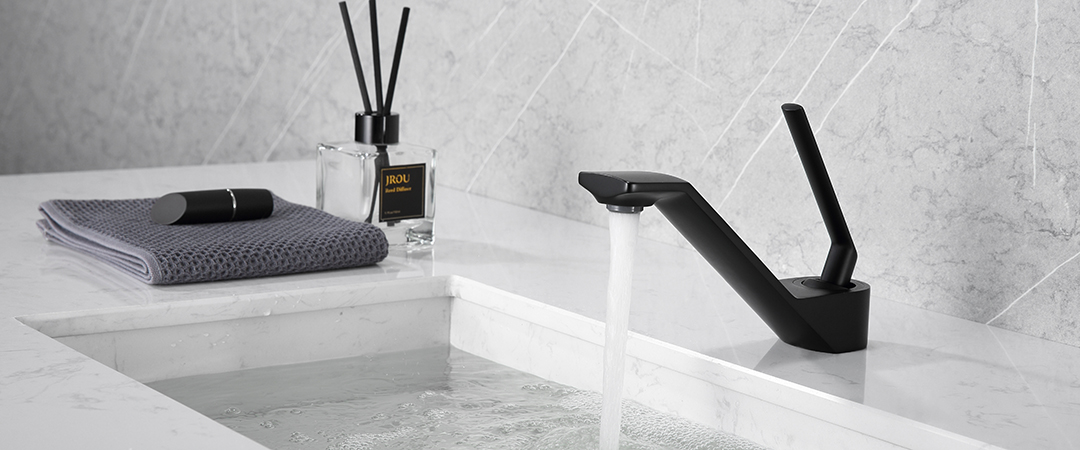
- Design: Feature a single stick-like handle that allows multi-directional control of both water flow and temperature.
- Operation: Enables precise and ergonomic adjustments with just a light flick of the wrist.
- Aesthetic style: Common in high-tech, futuristic, and avant-garde bathroom designs.
- Ease of use: Offers smooth, effortless operation, suitable for users of all ages and abilities.
- Accessibility: An excellent option for universal design and for individuals with mobility challenges.
The Technical Deep Dive: Durability, Maintenance, and Quality
The long-term performance and tactile feel of your faucet are determined by the quality of its components. Investing here saves money and headaches later!
Core Materials: The Foundation of Durability
- Solid Brass: Extremely durable and corrosion-resistant; ideal for long-term use. Higher upfront cost but excellent long-term value.
- Stainless Steel: Durable and corrosion-resistant with a modern look; easier to maintain, slightly more affordable than brass.
- Zinc/Zinc Alloys: Budget-friendly but less durable and prone to corrosion; may require earlier replacement.
- Plastic/Acrylic: Cheapest option, often used for small components; least durable and easily damaged by hard water.
Internal Mechanics: Quality of Operation
- Ceramic Disc Valves: Ultra-durable, watertight, smooth operation, low maintenance; modern benchmark.
- Cartridge Valves: Reliable, smooth operation; easy to replace; common in single and double-handle faucets.
- Ball Valves: Older single-handle design; more components, higher risk of leaks, harder to repair.
- Compression Valves: Oldest two-handle design; simple and cheap to repair but prone to drips over time.
Finish as a Maintenance Commitment
| Finish | Aesthetic | Best For Styles | Durability | Maintenance | Relative Cost |
|---|---|---|---|---|---|
| Polished Chrome | Highly reflective, mirror-like, cool-toned | Versatile (Modern, Traditional) | High | Shows fingerprints and water spots easily; requires frequent cleaning | $ |
| Brushed Nickel | Soft matte, low-sheen, warm-toned | Versatile (Traditional, Transitional, Modern) | High | Excellent at hiding fingerprints and water spots; low maintenance | $$ |
| Matte Black | Non-reflective, bold, dramatic | Modern, Industrial, Minimalist | Medium to High | Hides fingerprints but shows hard water spots, dust, and mineral buildup prominently | $$$ |
| Oil-Rubbed Bronze | Dark, rich, aged appearance | Traditional, Rustic, Mediterranean | High | Excellent at hiding smudges and water spots | $$$ |
| Brushed Gold/Brass | Warm, luxurious, soft glow | Modern Luxury, Traditional, Eclectic | High (especially with PVD coating») | Good at hiding smudges; “living finishes” will patina over time | $$$$ |
Context is Everything: Selecting Handles for the Kitchen vs. the Bathroom
The functional demands and design priorities of the kitchen and bathroom are fundamentally different, and the ideal faucet handle choice reflects this divergence.
- Primary function: Kitchen faucets are essential work tools; function and efficiency take priority.
- Single-handle preference: Quick, one-hand operation makes them ideal for cooking and cleaning tasks.
- Popular style: Single-handle lever faucets often come with pull-down or pull-out sprayers for added utility.
- Touchless technology: Gaining popularity for hygienic advantages in food preparation areas.
- Aesthetics: Finishes are chosen to coordinate with cabinets and appliances.
- Niche styles: Two-handle “bridge” faucets suit traditional or farmhouse kitchens but are less practical for daily use.
- Primary focus: Aesthetics and creating a cohesive design with other fixtures (towel bars, shower controls, cabinet pulls).
- Handle options: Both single-handle and double-handle faucets are popular.
- Double-handle widespread faucets: Ideal for larger master bathrooms, providing a luxurious, symmetrical focal point.
- Single-handle faucets: Compact design suits smaller powder rooms or guest bathrooms.
- Decision factors: Choice often depends on vanity size and desired style.
Designing for All: Accessibility, Safety, and Ergonomics
A well-designed faucet should be safe and usable for every member of a household. This involves understanding official accessibility standards as well as the practical needs of children and older adults.
Understanding ADA Compliance
- ADA Requirements»: Faucets must be operable with one hand, without tight grasping, pinching, or twisting, and activation force ≤ 5 lbs.
- Compliant Handles: Lever, blade, joystick, and touchless/touch-activated faucets.
- Non-Compliant Handles: Cross and knob handles require twisting, making them generally non-ADA compliant.
- Design Consideration: Traditional styles (cross/knob) are less accessible; modern adaptations with ergonomic improvements can help balance style and usability.
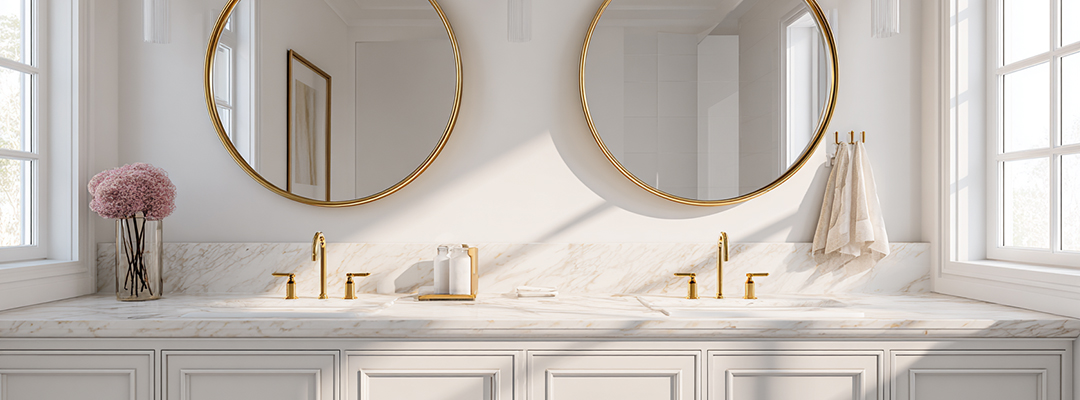
Considerations for a Multi-Generational Household
Beyond official standards, the safety and usability for different age groups are critical.
- Children:
- Main concern: preventing accidental scalding.
- Double-handle faucets require deliberate action, offering some safety.
- High-quality single-handle faucets with ceramic disc or cartridge valves provide smoother temperature control.
- Safest option: Touchless faucets with a thermostatic mixing valve to limit maximum temperature.
- Older Adults / Limited Mobility:
- Priority: ease of operation.
- Single-handle lever and joystick faucets require minimal force and dexterity, ideal for arthritis or reduced hand strength.
Conclusion: Your 4-Step Decision Framework
Choosing the right handle is transformed from a purchase into a thoughtful design decision when you follow this systematic framework:
- Function First: Single-handle for speed and one-handed use (kitchen); double-handle for precision and symmetry (bathroom).
- Style Second: Match handles to your aesthetic — Lever, Blade, Joystick for modern; Cross, Knob for traditional.
- Invest in Longevity: Opt for solid brass bodies with ceramic disc valves.
- Consider Environment: Choose finishes based on maintenance and water quality — brushed nickel for low maintenance, polished chrome for classic durability.
Following this guide will help you choose a faucet that looks great, lasts long, and works well. If unsure about installation, consult a professional plumber.
FAQs
About Luxuryhome
Luxuryhome is not just a faucet manufacturer or wholesaler, but more like a partner who can provide you with more added value.
We are united in our determination to produce China-made bath and kitchen fixtures adhering to the highest ethical principles. You have our promise!
More post you may interested in
